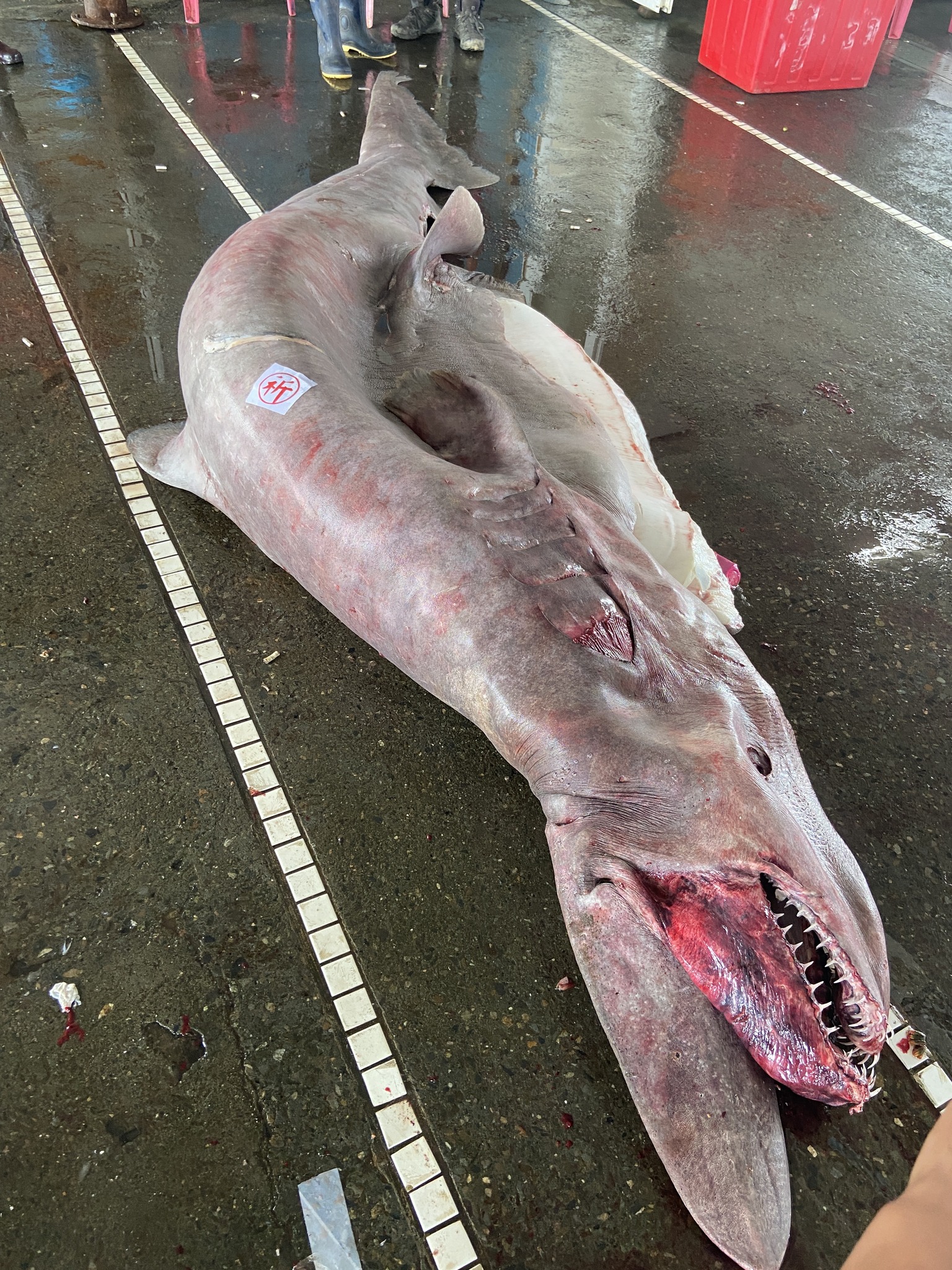Rare 1,760-pound goblin shark pregnant with 6 pups trawled up from Taiwan waters
Fishers who caught the deep-sea shark originally planned on selling it to a restaurant, but the Taiwan Ocean Artistic Museum obtained the specimen and plans on displaying it.

A trawler has landed a 1,760-pound (800 kilograms) goblin shark pregnant with six pups off the northeast coast of Taiwan — the largest goblin shark ever caught in those waters.
The fishers who hauled the unusual-looking shark from the depths on Tuesday (June 13) originally planned to sell their catch to a restaurant, according to the Taiwan Ocean Artistic Museum, where the specimen is now housed.
"The shark was almost purchased by a restaurant," museum staff wrote in a translated Facebook post. "After fighting for it, the Taiwan Ocean Artistic Museum bought it as a future marine education resource."
The museum will put the "rare prehistoric deep-sea shark" on display, staff added in the post.

Goblin sharks (Mitsukurina owstoni) are among the weirdest sharks in the ocean. These long-snouted creatures are bottom-dwellers, meaning they inhabit waters close to the seafloor down to depths of 3,940 feet (1,200 meters). Their jaws, which are full of needle-like teeth, thrust outward to snatch at prey such as bony fish, squid and crustaceans, then retract to a relaxed position under the shark's eyes, according to the Australian Museum.
Related: Why did a weird goblin shark going viral on Twitter blow up into a bizarre scientific spat?
Goblin sharks are the only living members of the Mitsukurinidae family of sharks, which originated 125 million years ago during the Cretaceous (145 million to 66 million years ago).
Sign up for the Live Science daily newsletter now
Get the world’s most fascinating discoveries delivered straight to your inbox.
While they are usually grayish in color, specimens hauled from the deep can appear pinkish-purple if their blood vessels are damaged by fishing gear.
"This species has translucent skin, a pink body and evil fangs," museum staff wrote on Facebook. "It belongs to an ancient shark family and is a very rare living fossil."
A picture uploaded with the Taiwan Ocean Artistic Museum's Facebook post shows the 15.4-foot-long (4.7 m) shark's rounded belly, which contained six pups. Goblin sharks mate via internal fertilization and are ovoviviparous, meaning females lay eggs that remain inside their body until they hatch, then give birth to live baby sharks.
The fishers accidentally caught the shark while bottom trawling — a widespread fishing practice in which boats tow a weighted net along the ocean floor.
Marine conservationists decry this practice because it is indiscriminate in what it catches, sweeping up large amounts of non-target species that are then discarded. Research published in the journal Fisheries Research suggests bottom trawling accounts for nearly 60% of annual fisheries discards, which amounts to roughly 6.6 million tons (6 million metric tons) every year.
Bottom trawling also damages the seabed, disturbs animal burrows and stirs up sediment, which can alter the water chemistry and reduce light needed for ocean-dwelling plants to photosynthesize.
The fishing practice is banned in some regions of the world, including 90% of the seafloor along the U.S. West Coast, but not in Taiwan.
Goblin sharks have only rarely been observed or filmed in the wild. Most of what researchers have gleaned about these enigmatic creatures comes from accidentally caught specimens. The species is not considered to be endangered by human activities.

Sascha is a U.K.-based staff writer at Live Science. She holds a bachelor’s degree in biology from the University of Southampton in England and a master’s degree in science communication from Imperial College London. Her work has appeared in The Guardian and the health website Zoe. Besides writing, she enjoys playing tennis, bread-making and browsing second-hand shops for hidden gems.









